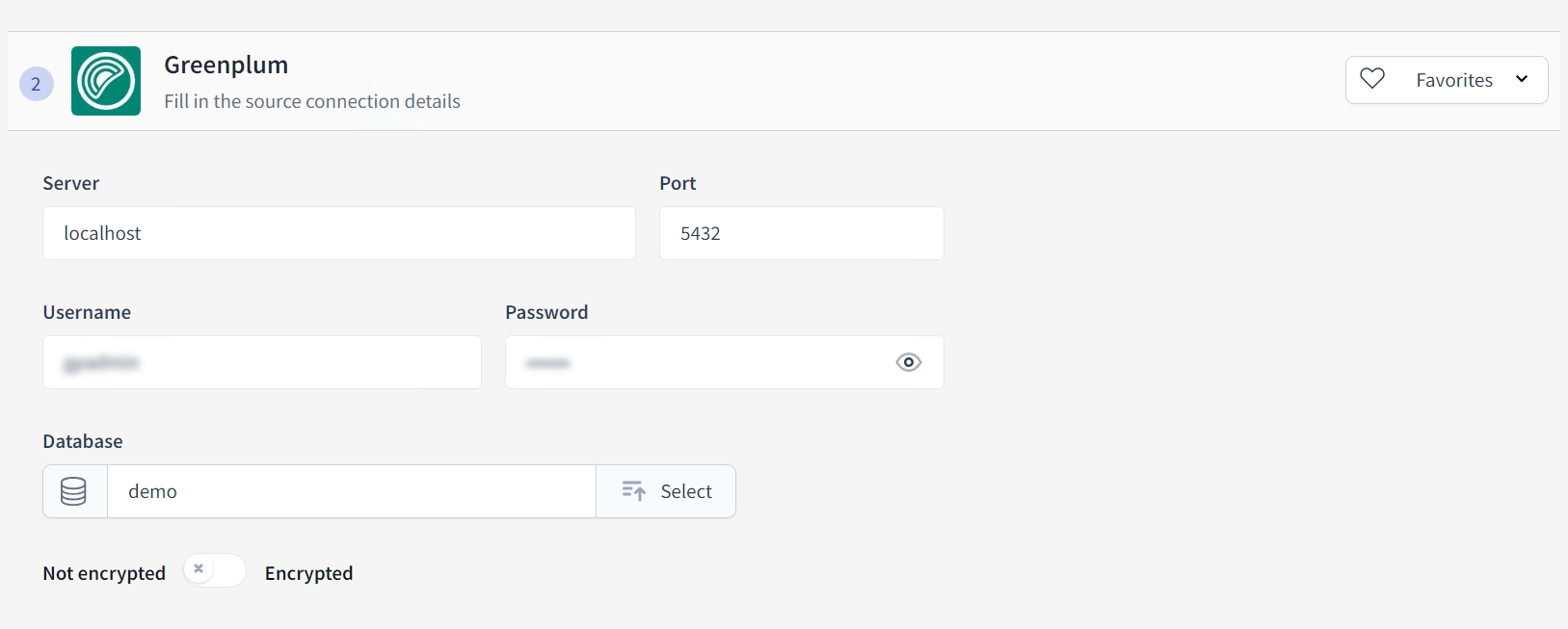Greenplum

Connection Details
Server
Specify the hostname or IP address for the Greenplum database server. If it's running on the same machine as your client application, you can use localhost.
Port
The port number that the Greenplum service is listening on. The default port for Greenplum is 5432.
Username
The username for the database login. This should be a user that has the necessary permissions for the operations you intend to perform.
Password
Enter the password corresponding to the username provided.
Database
Use the 'Select' button to choose from a list of available databases or enter the name of the database you wish to connect to manually.
Encryption
Toggle between Not encrypted and Encrypted to determine whether the connection should use SSL. It is highly recommended to use Encrypted for transferring data securely, especially if connecting over an untrusted network.
Ensure that the users have the correct permissions to access the database and that the server information is accurate to prevent connection issues. Remind users to handle credentials securely and to use encryption whenever sensitive data is being transferred.
Last updated